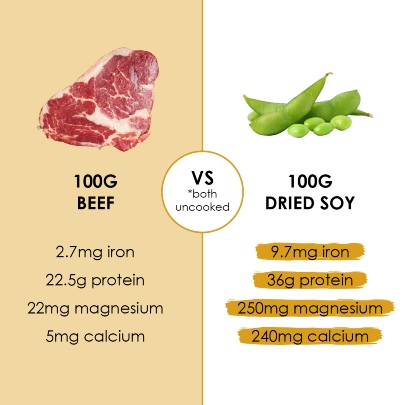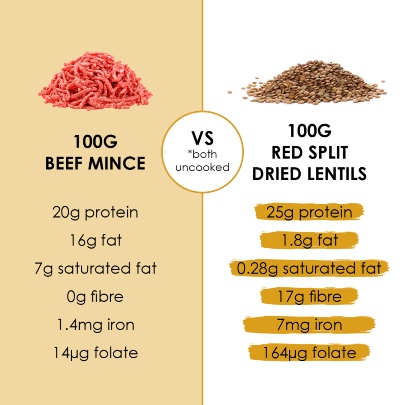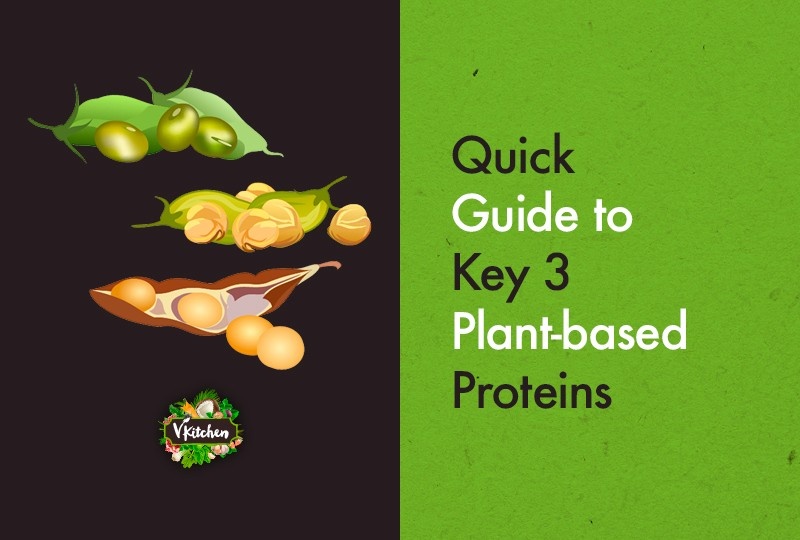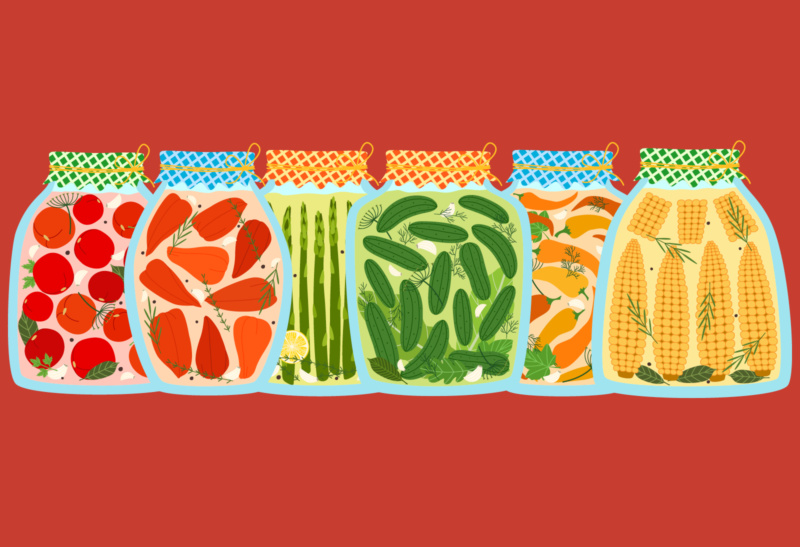The use of vegetarian proteins for menus’ main dishes increased by 40% from 2018 to 2020* clearly indicating a key consumer interest and demand for meat-free alternatives on menus.
So, what are these vegetarian proteins? And do they have a positive effect on our nutrition?
Starting with soy protein

Today, soy is found in all variations of food & drink, such as: milk, cheese, flour, tofu, tempeh, soy sauce, yoghurt, soy-based veggie meats, the list goes on. So stripping it back, soybean is an edible bean originating from East Asia and the protein within the bean is usually generated by deshelling and “crushing” the soybeans.
Soy protein has been shown to support health needs as a source of lean, protein alternative. Great! But what does it actually do for us in comparison to a meat based protein?
Soy can provide us with more protein, iron, magnesium and calcium vs 100g of beef. So, for many health conscious consumers, substituting red meat for soy could be beneficial for them.
Moo’ving on to chickpeas

Chickpeas are a type of pulse, with one pod containing two or three peas.
They are chock full of nutrients and high in protein. They are a key ingredient in Middle-Eastern and Mediterranean cuisines, often used in curries, tagines and salads. Not forgetting they are a base ingredient in hummus and falafel.
But we are also seeing chickpea milk and when ground to a flour, it can be used in: pizza bases, wraps, cakes and more! So similarly, let’s see how chickpea compares to a meat protein.
Again, chickpeas are perfect for those looking to scale down on their meat in-take and look at flavoursome, healthy alternatives.
They are a great substitute for when consumers want to increase their calcium, fibre or iron intake and reduce their saturated fat consumption.
Let’s talk lentils

Lentils are seeds grown in pods and have a lens (flat) like appearance.
Many of us are already familiar with green or red lentils and see them commonly used within curries but they can be eaten fried, baked or boiled, sauced, bunned or bowled! They are easy to cook and have an earthy flavour but can also absorb other flavours really well.
Lentils include many dietary vitamins, such as vitamins B’s like folate, zinc, potassium and have up to 25% protein, making them an excellent meat alternative.
Compared to 100g of ground beef, lentils are way of reducing total fat and saturated fats but a great source of protein, fibre and iron.
When looking at the above alternative proteins, we can see they have some clear health benefits when compared to meat proteins. These options are not only appealing to vegans but for health conscious consumers, making them these great to include on your menu.
V Kitchen has a wonderful vegan and plant-based product selection, from scratch-cook ingredients, to ready-to-cook delicious menu options, visit https://www.bidfood.co.uk/v-kitchen/ to find out more.

Thinking of taking part this Veganuary? Click on the link below and see how you can be included.
www.veganuary.com/try-vegan?d=bidfood
Hungry for more? Check out our related blogs:
Our top 5 vibrant veggie recipes
Quick guide to 3 plant based proteins
Chef Martin’s top 5 vegan protein alternatives
5 recipes to celebrate World Vegan Month
Top 5 products for a vegan summer
Top 5 products for a vegan Christmas
*Source: Lumina Intelligence Menu and Food Trends Report, December 2020



